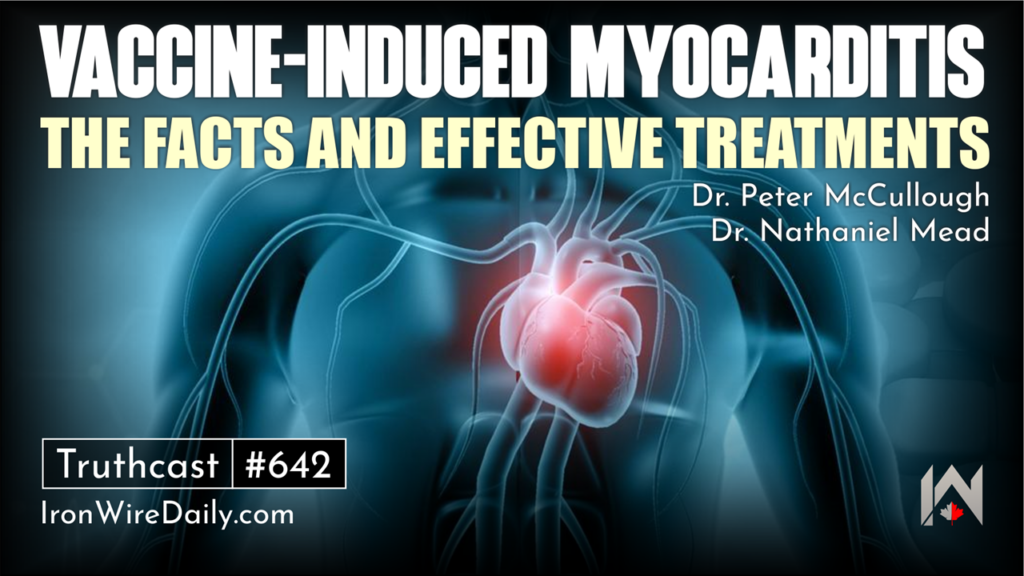Sanders, King Introduce Bill to Ban Prescription Drug Advertising to Consumers

Source: Children’s Health Defense
Sens. Bernie Sanders (I-Vt.) and Angus King (I-Maine) on Thursday introduced federal legislation to end direct-to-consumer prescription drug advertising.
If the End Prescription Drug Ads Now Act passes, it will ban all prescription drug ads on television, radio, print and digital platforms, including social media.
“The American people are sick and tired of greedy pharmaceutical companies spending billions of dollars on absurd TV commercials pushing their outrageously expensive prescription drugs,” Sanders said in a statement. “They want us to take on the greed of the pharmaceutical industry and ban these bogus ads.”
The ban would hit pharmaceutical companies hard — they make back in sales up to five times as much as they spend on commercials. It will also affect the income streams of major television networks, which bring in billions of dollars from pharmaceutical ads.
Drug advertising also buys influence over news outlets, according to Children’s Health Defense CEO Mary Holland. Holland said:
“Drug companies use advertising to do more than just sell more drugs. The billions Big Pharma spends on ads, especially for TV and legacy print media, guarantee that network news decision-makers will run only favorable news stories and veto any reporting that casts drugs or drugmakers in a negative light.
“We saw this clearly during the pandemic, when not a single major news outlet did any real critical reporting on COVID vaccines. Instead, they parroted pharma’s ‘safe and effective’ propaganda, while ignoring the waves of injuries and deaths that followed the rollout of the shots.”
Prescription drugs accounted for 30.7% of ad minutes across evening news programs on ABC, CNN, Fox News, MSNBC and NBC last year through Dec. 15, according to The Wall Street Journal (WSJ). Last year, Big Pharma spent more than $5 billion on TV ads alone.
The content of the proposed bill echoes calls made by U.S. Health and Human Services (HHS) Secretary Robert F. Kennedy Jr. during the 2024 presidential election. President Donald Trump has also said he supports a ban on prescription drug advertising.
Let’s get President Trump back in the White House and me to DC so we can ban pharmaceutical advertising. pic.twitter.com/Qp7fj9xskU
— Robert F. Kennedy Jr (@RobertKennedyJr) November 3, 2024
Sanders’ and King’s offices did not respond by press time to The Defender, which inquired if they and Kennedy had collaborated on the bill. Sanders, who voted against Kennedy for HHS secretary and made it clear during Kennedy’s confirmation hearings that he supports vaccines, has long advocated for lower drug prices.
HHS did respond by email to The Defender, but did not specify if Kennedy’s office was working with Sanders on the new bill.
Past attempts to limit drug ads failed
New Zealand is the only other country that allows direct-to-consumer marketing of prescription drugs.
In the U.S., the practice has been ongoing for decades, drawing criticism from advocates like Kennedy, researchers, the American Medical Association and other doctors’ associations, and even mainstream health news outlets, including STAT News.
In recent years, Pharma has thwarted efforts to regulate drug ads, claiming a ban would violate their First Amendment rights.
When the first Trump administration tried to require drugmakers to list drug prices in TV ads, the industry took it to court. A federal judge blocked the move, ruling that HHS lacked congressional authority to compel drug companies to disclose drug pricing.
There have been other recent moves in Congress to limit drug ads. Last year, King also introduced a bill to prohibit pharmaceutical advertising to consumers in the first three years after a drug is first approved.
In May, Sens. Josh Hawley (R-Mo.) and Jeanne Shaheen (D-N.H.) proposed a bill to strip pharmaceutical companies of the ability to deduct the costs of consumer drug advertising from their taxes as a business expense.
Drugmakers spend billions on ads each year, Americans watch hours of ads
Drug commercials are ubiquitous on U.S. television today. The average television viewer watches as many as nine advertisements per day and about 16 hours of ads per year — more time than people spend with their primary care physicians.
Between 2016 and 2018, drugmakers spent $17.8 billion on ads for 553 drugs. Most of these drugs treat chronic medical conditions like arthritis, diabetes, depression, autoimmune conditions and obesity.
That number climbs each year. In the first quarter of 2025, for the top 10 drugs alone, spending rose 30% over the same period last year to $729.4 million, FiercePharma reported.
Commercials for these drugs are probably familiar to most people — Novo Nordisk dropped almost $100 million on Wegovy ads in the first quarter, and almost $50 million on Ozempic ads. AbbieVie spent just under $90 million on Skyrizi, its drug for psoriasis and Crohn’s disease, and over $100 million on Rinvoq, for Crohn’s, arthritis and eczema.
Drugmakers target major events, including college basketball’s March Madness, the Super Bowl and the Oscars, but they also advertise heavily on daily programs like network nightly news.
The U.S. Food and Drug Administration’s (FDA) regulatory power over the ads, first established in the 1960s, was diminished in the 1980s and 90s.
After the drug thalidomide, marketed to pregnant women to treat nausea, caused serious birth defects in the 1950s and early 1960s, Congress empowered the agency to regulate drug labeling and advertising. The FDA mandated that ads be truthful, present a balanced representation of risks and benefits, and include information about all possible risks listed on the label.
However, in the late 1990s, the FDA relaxed the requirements about which risks Pharma had to share with consumers. Spending on television ads exploded. In 2004, the agency relaxed the requirements even further. Spending on ads shot up 330% between 1996 and 2005, reaching $4.2 billion by 2004, and continued to grow after that.
As regulations were loosened, the FDA took fewer enforcement actions.
What’s wrong with direct-to-consumer advertising?
Drug companies argue that drug ads empower patients in their relationships with their providers by increasing their awareness about disease and treatment options.
A 2013 paper from the National Bureau of Economic Research suggested that advertising can “somewhat” educate consumers and extend drug care to “undertreated patients.”
However, the report said advertising also increases the number of patients who request an advertised medication and the likelihood their prescriber will give it to them, whether they need it or not. Studies have also shown that physicians will often prescribe the requested drugs despite their own reservations.
Research also demonstrates there is no evidence that drug ads improve patient care. A 2023 paper published in JAMA Network Open found that drug ads led to more sales of drugs with lower clinical benefits, suggesting that advertising drives demand for more marginally effective drugs.
As consumers look to these drugs, the government can also end up footing the bill. According to a report by the congressional watchdog Government Accountability Office, 60% of the $560 billion that Medicare and its beneficiaries spent on drugs went to the advertised drugs.
The ads also lead to greater use of higher-cost drugs over generics, even when those drugs offer no greater benefit.
Studies have also shown that ads for HIV drugs created a false sense of protection and led to an increase in risky behavior.
In the early 2000’s, Merck’s ad campaign for its pain reliever Vioxx — heavily advertised by celebrity athletes like Dorothy Hamill and Bruce Jenner — helped the drug shoot to blockbuster status.


This article was funded by critical thinkers like you.
The Defender is 100% reader-supported. No corporate sponsors. No paywalls. Our writers and editors rely on you to fund stories like this that mainstream media won’t write.
Vioxx was used by 80 million people worldwide before it was abruptly withdrawn from the market in 2004, after a study showed it doubled the risk of heart attacks and strokes. It was estimated Vioxx caused 140,000 additional heart attacks in the U.S. alone.
After the Vioxx controversy, many Congress members called for limits on drug advertising, yet direct-to-consumer advertising has only grown.
During the COVID-19 pandemic, companies sponsored more than just drug ads — they launched campaigns to persuade Americans to take the COVID-19 vaccines by flooding television and social media with positive stories, according to the WSJ.
Pfizer paid for prominent news and information programs on American television. Moderna sponsored forms of consumer persuasion that included a skit on late-night host Jimmy Kimmel’s show and online video discussions on news websites.
This new form of ads typically didn’t name the products. Instead, they discussed the mRNA vaccines or monoclonal antibodies in general terms in an attempt to familiarize the public with their products and convince people to take them.
Nightly news shows did name the companies and presented them in glowing terms.
In 2021 and 2022 alone, vaccine makers raked in $90 billion in profits from the vaccines.
Related articles in The Defender
- Pharma Spends Billions on Drug Ads, Fears Trump Administration Will Try to Ban Them
- ‘Brought to You by Pfizer’: Pharma Giant Spends More on Ads, News Sponsorships, Than Research
- ‘Ask Your Doctor’: Can’t Someone in Congress Make These Endless Drug Ads Disappear?
- Here’s Why Americans See Prescription Drug Ads All Day Long














